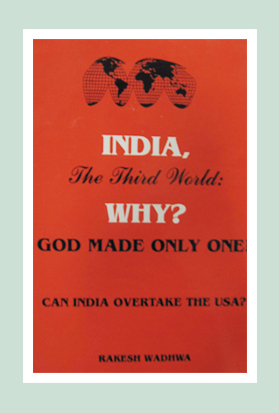Covid-19 Pandemic: The Hidden Story

On March 24, the Government of India ordered a nationwide lockdown, restricting 1.3 billion people from traveling to their workplaces in the face of the coronavirus outbreak. The lockdown, which was initially planned for 21 ways was later extended till May 31. Before we could cheer a reopening, the lockdown was extended till June 30, albeit with some relaxations. The lockdown was more than an infringement on human rights.
The only economic activity that was permitted was “essential services,” which included hospitals, pharmacies, banks and grocery shops. Here’s what confuses me. Why are the other industries termed as “non-essential”? Can someone tell me which industry or sector is not essential for the Indian economy? For a developing country like India, every business is essential. Given our unemployment rate and the extent of disguised unemployment, is there really any job that is not essential. Who believes their job is not essential for their lives?
The Global Economy Crumbles
It is not the virus, but the lockdown that has triggered what could well be the deepest global recession in our lifetime. Was it well thought through?
On June 24, the IMF revised its projection for a contraction in the global economy to 4.9%, from its earlier forecast of 3%. Seem terrible? What’s worse is that the IMF now expects the global economy to recover at a much slower pace in 2021 than was earlier anticipated.

Back Home in India
In mid-June, the World Bank projected that the Indian economy would contract by 3.2% in 2020-21. On the face of it, this seems better than the expected performance of the global economy. However, the predicament that India faces is that it has a much lower GDP base than developed nations. Emerging economies like India will be the hardest hit by the lockdown.
An economic contraction begins a vicious cycle. With the contraction, jobs will be lost, and income will fall. When income declines or disappears, demand recedes. And when demand falls, businesses struggle, and some are forced to shut shop. This in turn leads to further job losses.
Around 122 million people in Indian had already lost their jobs in April alone, according to estimates of private thinktank Center for Monitoring Indian Economy. The hardest hit is the weakest section of our population – the daily wage workers and people employed by small businesses. And, this is just the beginning.
The projected economic contraction will push 12 million people into “extreme poverty,” says a report by the World Bank. More than 900 million people will be living in poverty – that’s a whopping 68% of the total population, estimate experts at international development consulting firm IPE Global. This means the extended lockdown will take India back more than 10 years.
The Lasting Impact
The damage will have a lasting impact. Although growth may resume next year, we will be growing from a smaller base and at a slower pace. Poverty will continue to be a serious issue for our country. And, you know what. Poverty does not mean living a hard life. In India, poverty means death. If our GDP declines by 10%, an additional 300,000 people will die. This correlation has been established with data over the last several decades. And since GDP will be lost forever (base will be lower), the following years will also see deaths due to the economic impact of the lockdown.
What is the Way Forward?
The lockdown has happened. Projections are grim. Now what? How does India find its feet again? The answer, as usual, lies in giving businesses a conducive environment to operate in. If businesses flourish, jobs will be created, demand will rise, and the economy will grow. It’s as simple as that. During the lockdown, Amazon reinvented itself and started using its logistics infrastructure to deliver food. Zoom made videoconferencing so simple that it got even Gen X to feel comfortable with video calls amid the lockdown. Hotel groups developed mobile apps to facilitate contactless stays. Beauty companies used their production facilities to manufacture hand sanitizers. The list goes on.
Businesses will always find a way. The only help that governments can provide is to ensure that businesses can operate free of policy limitations and debilitating tax and excise laws. Read here to know about what the government can do to boost growth.
 Rakesh Wadhwa. Ever since, I was a school boy, I knew India was on the wrong path. Socialism was just not what we needed to get ahead. Government controlled our travel; government controlled our ability to buy and sell; and government controlled our freedom to move our money. My life has focused on the inherent rights people have. When I was in college, I never understood, what the governments meant by their "socialistic attitude". If people are free to buy, sell and move their capital themselves without any restrictions by state, then the welfare of people is inevitable & hence the countries they live in will become wealthy. The government has no right whatsoever, to point a finger at me or my business. I am not a revolutionary. I just want to light up my cigarette and not get nagged about it. I believe in non-interfering attitude to attain more.
Rakesh Wadhwa. Ever since, I was a school boy, I knew India was on the wrong path. Socialism was just not what we needed to get ahead. Government controlled our travel; government controlled our ability to buy and sell; and government controlled our freedom to move our money. My life has focused on the inherent rights people have. When I was in college, I never understood, what the governments meant by their "socialistic attitude". If people are free to buy, sell and move their capital themselves without any restrictions by state, then the welfare of people is inevitable & hence the countries they live in will become wealthy. The government has no right whatsoever, to point a finger at me or my business. I am not a revolutionary. I just want to light up my cigarette and not get nagged about it. I believe in non-interfering attitude to attain more. 
 The Bastiat Award is a journalism award, given annually by the International Policy Network, London. Bastiat Prize entries are judged on intellectual content, the persuasiveness of the language used and the type of publication in which they appear. Rakesh Wadhwa won the 3rd prize (a cash award of $1,000 and a candlestick), in 2006.
The Bastiat Award is a journalism award, given annually by the International Policy Network, London. Bastiat Prize entries are judged on intellectual content, the persuasiveness of the language used and the type of publication in which they appear. Rakesh Wadhwa won the 3rd prize (a cash award of $1,000 and a candlestick), in 2006.
What the readers are saying…